Book an Appointment Today
Don’t let spine issues hold you back. Contact us today to schedule an appointment and take the first step towards a pain-free life. At asynchrony we’re here to support you on your journey to optimal spine health.
What is coccydynia?
- Coccydynia, commonly known as tailbone pain, refers to pain and tenderness in or around the coccyx — the lowest part of the vertebral column. This pain is typically felt between the buttocks, especially when sitting or rising from a seated position.
Who is Likely to Be Affected?
- Females are about five times more likely to develop coccydynia than males.
- It is more common in adolescents and adults compared to children.
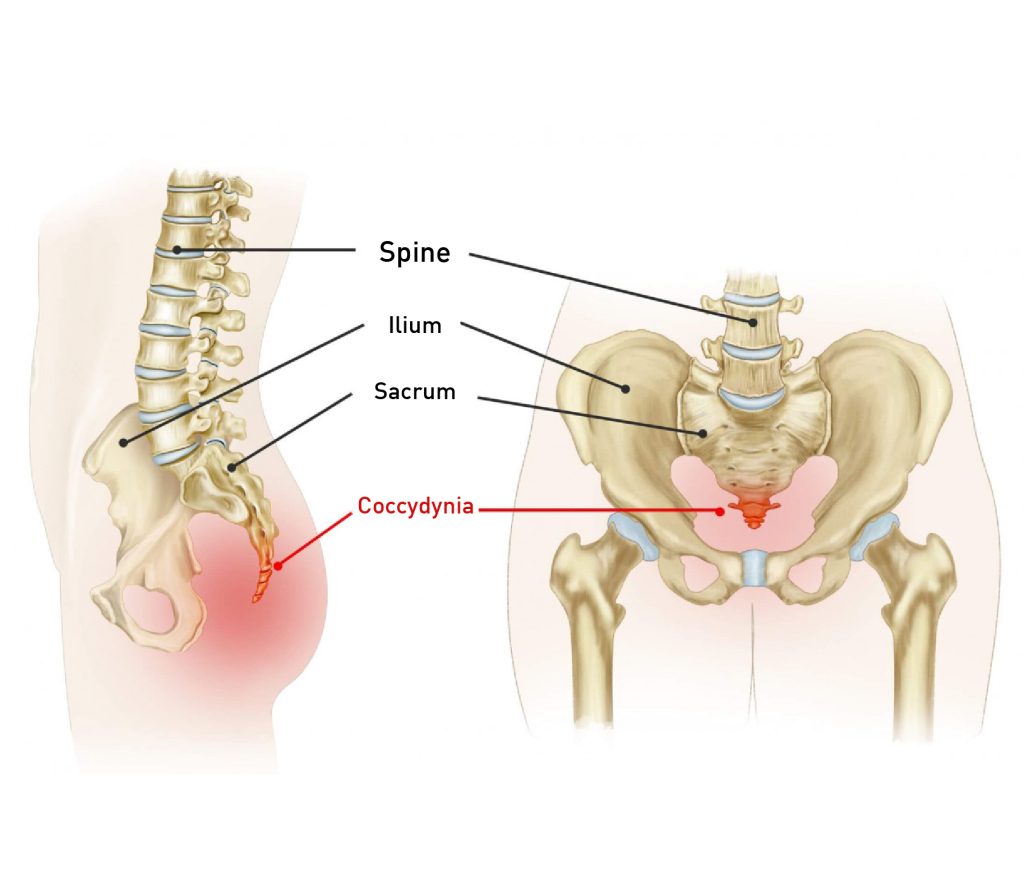
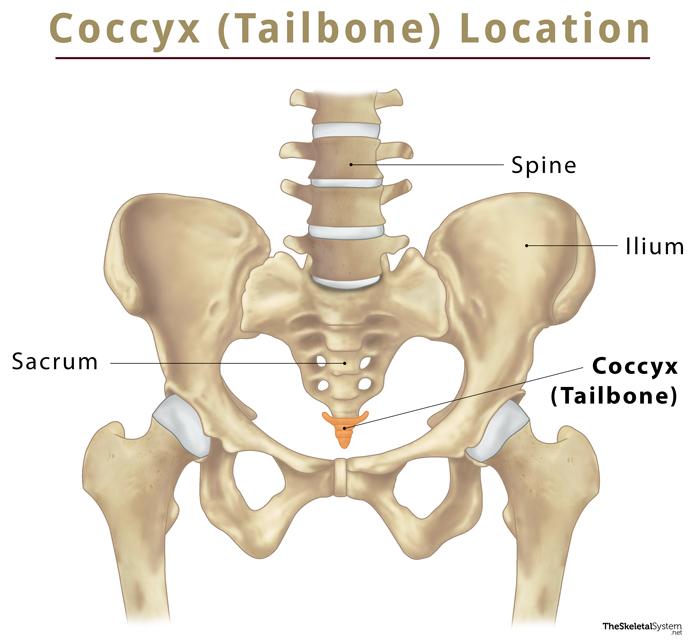
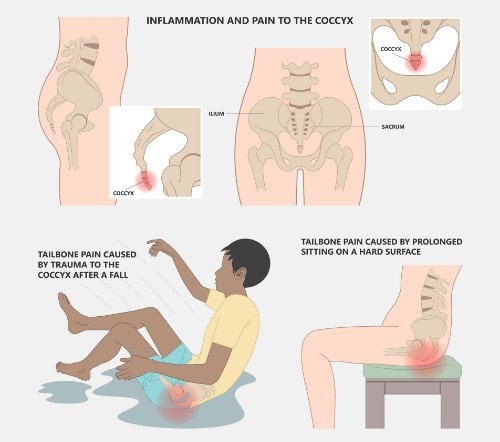
- Backward Fall
A sudden fall, especially onto a hard surface, can bruise, dislocate, or fracture the tailbone.
- Repetitive Strain Injury
Sports like cycling and rowing, which involve repetitive leaning movements, can strain the tissues surrounding the tailbone.
- Pregnancy or Childbirth
Hormonal and physical changes during pregnancy stretch the pelvic tissues.
- In rare cases, the coccyx can fracture during delivery.
- Loss of support to the tailbone can lead to pain.
- Obesity
Excess body weight puts increased pressure on the tailbone, potentially causing it to lean backward and become painful.
- Being Underweight
Lack of natural fat padding in the buttocks can lead to less cushioning, causing the tailbone to rub against surrounding tissues and become inflamed.
- Prolonged Sitting
Sitting for extended periods, especially on hard, narrow, or uncomfortable surfaces, can increase pressure on the coccyx and cause pain.
- Ligament or Muscle Damage
Injury or weakness in the ligaments or muscles supporting the coccyx can cause it to shift into an abnormal position, leading to pain.
- Hemorrhoids
Inflamed tissue near the anal area can pull on the coccyx, resulting in discomfort or pain.
- Tumors or Infections
In rare cases, a tumor or infection in the coccyx or surrounding tissues may lead to coccydynia.
Sign and Symptoms
- Type of Pain:
- Can range from a dull ache to a sharp, shooting pain
- Typically felt in and around the tailbone (coccyx)
- Aggravating Factors:
The pain tends to worsen with activities that put pressure or strain on the coccyx, such as:
- Prolonged sitting, especially on hard or narrow surfaces
- Leaning back while sitting
- Getting up from a seated position
- During defecation (bowel movements)
- During copulation (sexual intercourse)
- During coughing
- During menstruation, due to increased pelvic pressure (in females)
- Radiating Pain:
- May radiate to the lower back, buttocks, or rarely down to the thighs
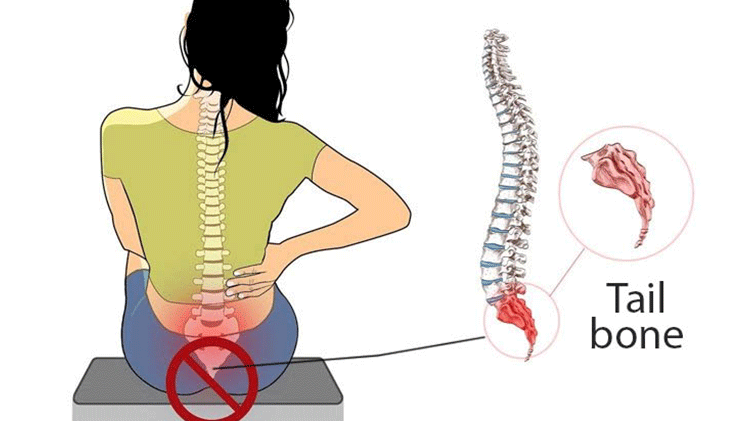
How Synchrony Can Help You with Tailbone Pain (Coccydynia)
Patients diagnosed with coccydynia are advised to avoid activities and positions that aggravate the pain. At Synchrony, our approach focuses on relieving pain, restoring alignment, and improving function through the following interventions:
1. Mobilizations
- Gentle coccyx mobilizations can help realign and relieve stress on the tailbone.
Initial sessions focus on rotational mobilization of one side at a time to reduce tenderness and allow gradual adjustment
2. Manipulation
- In specific cases, intra-rectal manipulation may be performed by trained professionals.
The coccyx is gently moved through flexion and extension while the patient lies in a lateral position.
Targeted release of the coccygeus and surrounding pelvic muscles helps reduce tension and pain.
4. Biofeedback Training
Biofeedback techniques may be used alongside manual work to prevent excessive muscle pull on the coccyx and improve muscle awareness.
5.Strength Training
- A customized strengthening program is designed to improve the stability and support of muscles around the coccyx, including the pelvic floor, gluteal, and lower back muscles.
- Strengthening these muscles helps in alleviating pain and preventing recurrence.
6.Postural Adjustments and Support
- Use of a specific cushion while sitting helps reduce direct pressure on the tailbone and promotes proper posture during prolonged sitting.
- Ergonomic education and posture training to minimize strain on the coccyx.
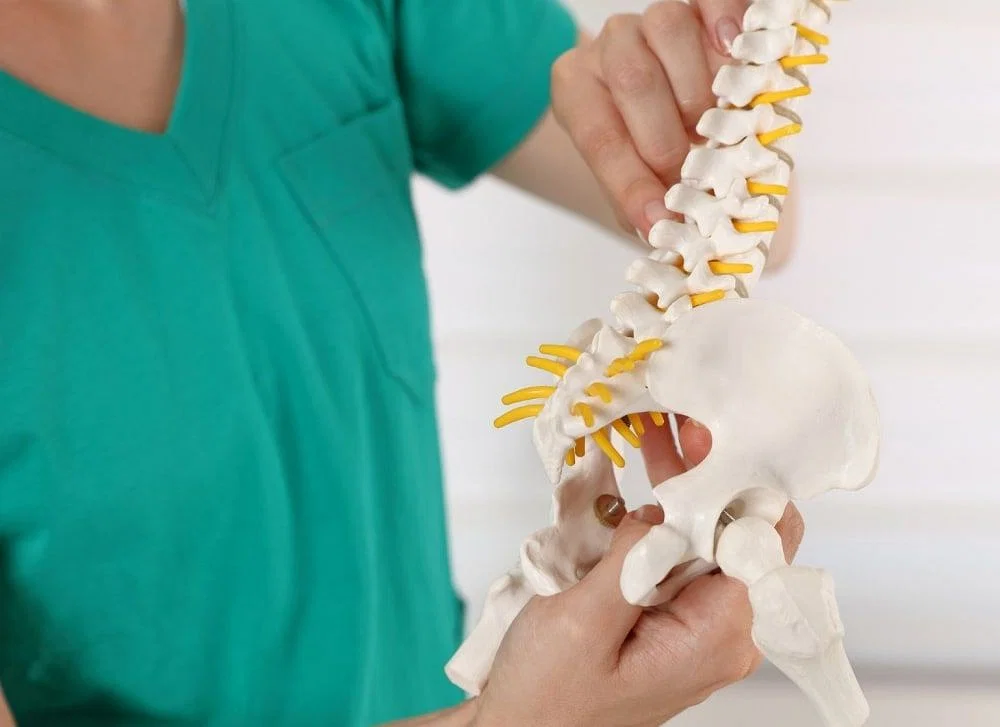
Request a Free Phone Consultation
Fill out the form and we will contact you.
Get In Touch In The Mean Time.
Want to Visit Our Clinic? Please Call Us
